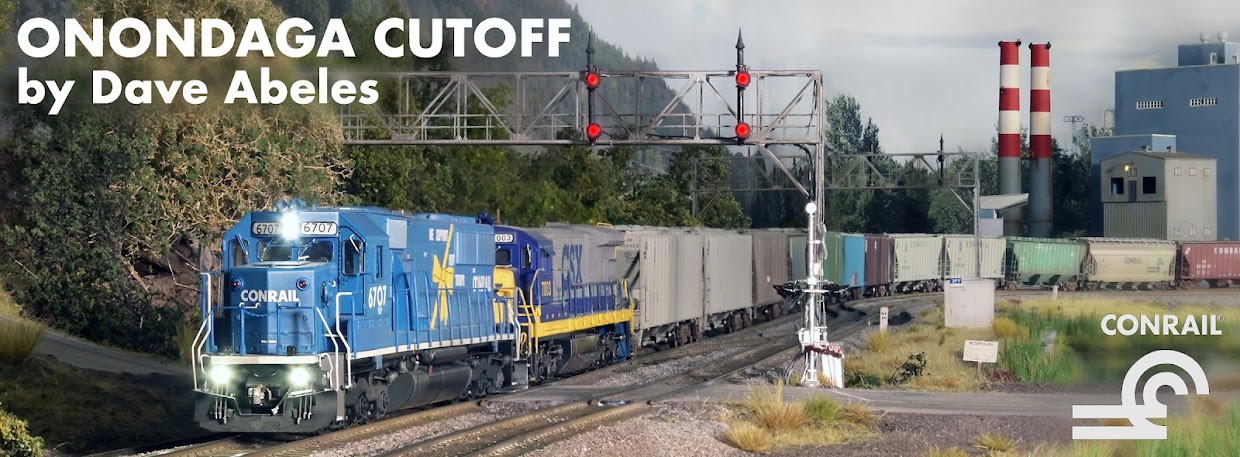As time rolls long, change is inevitable. Some things change for the worse, and many change for the better. One of those things that is changing for the better is digital photography.
While in years past photographers made images and had to choose the best one for a given audience or taste, that is not the case today. With the artistic control that photographers have in post-processing for digital images, including Photoshop or other photo editing software, there is a new and exciting ability to convey a final image assembled by using multiple originals.
In the last few years I have become aware through the model railroading media and other blogs of "photo stacking," a newer technique that allows multiple images with the same framing but different focus points to be combined into one image with much greater depth of field. Here's my first experience with using this technique on the Onondaga Cutoff:
Note how the track in the foreground, the signals and locomotives in the center, and the backdrop are all in reasonably sharp focus. Amazing!
For decades the technique was to use a tripod and long exposure with your F-stop set to the highest available aperture to maximize depth of field. And that worked, generally - but still kept most extremes in a softer or outright blurry focus. Photoshop can fix many things but not that. Enter photo stacking: separate software that combines the sharpest parts of 5, 10, 20, or more images of the same scene, stacking them and showing just the sharpest parts of each.
I used the Helicon Focus software suite for this, and have lots to learn - but this image was made with 10 base images in about 15 minutes.
Stay tuned as I learn more about this, and share with you here. This hobby is getting to be more and more fun as time goes on!
~RGDave


No comments:
Post a Comment